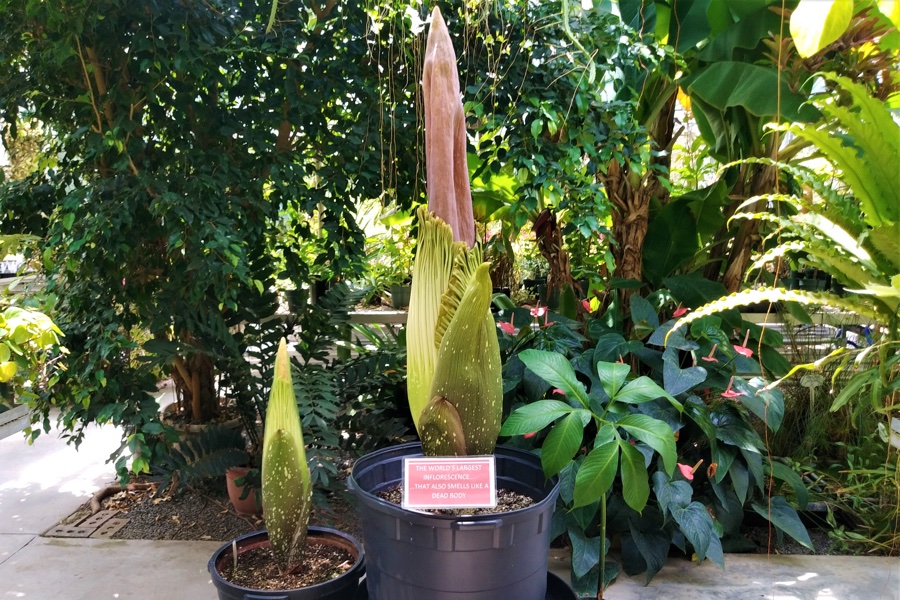Giant Stinky Corpse Flowers Are Incredibly Rare. Two Are About to Bloom Near Philly
Here's what you need to know if you want to see — and smell — the massive phallic flowers that reek of rotting flesh in their full putrid splendor.

These two rare corpse flowers are getting ready to bloom. Photo courtesy of Temple Ambler Greenhouse
Anyone who missed the chance to see — and smell — Longwood Gardens’ corpse flower last summer will get another shot in the next week to experience this rare event locally.
The Temple University Ambler Campus Greenhouse and Ambler Arboretum, just outside of Philadelphia, is waiting for not one but two corpse flowers to bloom. The odds of both flowering at the same time are pretty low, but getting to see even one is bucket-list-worthy.
The corpse flower is a showstopper in the botanical world. Its Latin name, Amorphophallus titanum, means “large misshapen penis,” and it’s also called the titan arum. Found in the wild only on the Indonesian island of Sumatra, the endangered plant can reach seven feet tall, with leaves that fan out 12 feet and a tuber that can weigh 150 pounds, according to the Ambler Campus Greenhouse. It also has the largest “unbranched inflorescence,” or flowering part of the plant, in the world.
Corpse flowers typically take seven to 10 years to produce a striking deep maroon bloom, which usually only lasts for about two days before withering and beginning the seven-to-10-year clock anew. Then there’s the corpse flower’s distinctive stench of rotting meat, meant to attract pollinators like beetles and flies.
Plant enthusiasts and aficionados of the bizarre jump at the chance to view this enormous short-lived flower and experience its rancid odor. “The corpse flower is such an oddball thing — it smells like roadkill or rotting flesh,” says Benjamin Snyder, manager of the Greenhouse Education and Research Complex at Temple Ambler. “It’s so large and so different that people want to see it.”
This will be the Ambler Campus Greenhouse’s first corpse flower blossoming. Even more extraordinary, it has two specimens ready to bloom. The larger flower is expected to open first. The appearance of a bud on the smaller corpse flower surprised greenhouse staff because, notes Snyder, small plants don’t usually generate blooms.
To see the them in person in all their stinky glory, visitors must register online for timed entry and follow Temple’s COVID-19 guidelines. Registration information will be posted on the Ambler Campus’s Corpse Flower Central page as well as on its Facebook, Instagram and Twitter accounts once the larger flower blooms. Only two days of visitation are anticipated.
Admission is $15 for the public and $10 for Ambler Arboretum members and Temple University students and alumni. The Ambler Campus Greenhouse is located at Temple University Ambler, 580 Meetinghouse Road, Ambler, PA 19002. Parking is available at the Temple Ambler Visitors Lot/Parking Lot 1, off Meetinghouse Road.
There’s also a “Name the Corpse Flowers” contest. To enter, fill out the form here.
Meanwhile, the flowers’ progress can be tracked through the Ambler Campus Live Stream.
https://www.youtube.com/playlist?list=PLMDbtEcOh2USrlVhWWK3_XavZufbuGJcu


